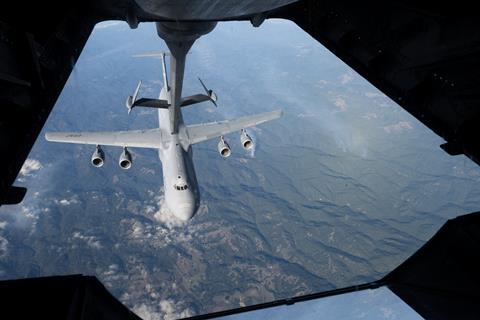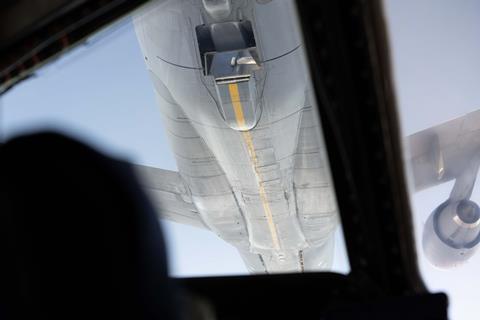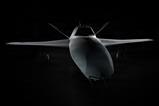The US Air Force (USAF) has successfully tested a new aerial refuelling technique known as reverse flow, in which a transport aircraft transfers jet fuel to a tanker.
The demonstration, which took place on 12 December over the US states of California and Oregon, involved a Lockheed Martin C-5M Super Galaxy strategic lifter and a Boeing KC-10 Extender aerial refuelling jet.
Under the reverse flow concept, a tanker connects to the transport aircraft via refuelling boom. However, rather than offload fuel to the transport as in standard operations, the tanker instead takes on gas from the transport to top off its own onboard supply.

Normally, refuelling a tanker would require the use of a second tanker aircraft. The reverse flow approach eliminates that constraint and makes more tanker aircraft available for other missions.
“By using a C-5 as a huge floating gas station, it allows more tankers to be positioned for offloading to fighter or mobility aircraft, versus having to use one tanker to refuel another,” says Major Justin Wilson, chief of standards and evaluations at the 22nd Airlift Squadron, which conducted the reverse flow test.
During the evaluation, a C-5M offloaded 10,660kg (23,500lb) of fuel to a KC-10 in approximately 30min.
According to Wilson, the recent test marked the first time the C-5M was used in reverse flow fuelling since the type’s initial testing and certification.
The first C-5A Galaxy was delivered to the USAF in 1970. The service began what it describes as an “aggressive” modernisation programme for the type in 1998 – re-designating the heavy-lift jet the C-5M Super Galaxy.
Improvements included updated avionics and upgraded propulsion using four GE Aerospace CF6-80C2-L1F (F-138) commercial engines, which the USAF says delivered 22% more thrust, a 30% shorter take-off roll, a 58% faster climb rate and increased cargo load.

With the reverse flow concept now proven viable, the USAF is once again expanding the capability of its long-serving strategic airlift platform.
The 22nd Airlift Squadron on 18 December said the reverse flow tests allowed aircrew to gather data that can be used in the future to enhance the range and capabilities of tanker aircraft.
“By doing reverse air refuelling, the aircraft is getting lighter at a quicker rate than if you were just flying normally, so the aircraft flies a little different,” Wilson says.
The C-5M evaluator pilot says onboard flight engineers are responsible for the main operational difference.
“To execute the reverse air refuel, we made amendments to two of our normal check lists,” says C-5M flight engineer Technical Sergeant Robin Ogg. “These changes were in the flight engineer’s fuel panel configuration to set us up to give fuel versus receiving it.”
The air force’s Air Mobility Command (AMC), which provides airlift and in-flight refuelling services globally, has been seeking creative ways to squeeze extra utility out of the existing fleet of aircraft.
The AMC has been experimenting with other platform innovations, including launching palletised cruise missiles from transport aircraft and using Boeing B-52 bombers to deliver cargo.































